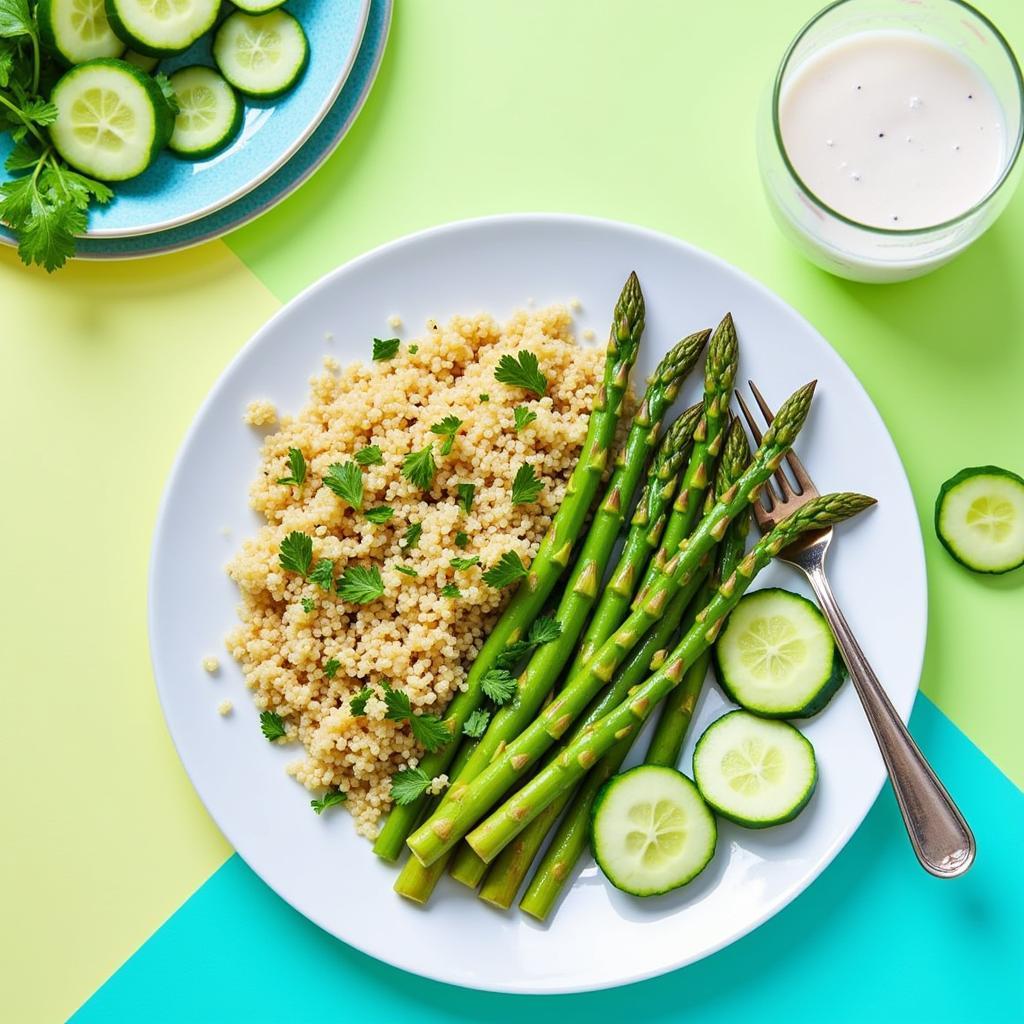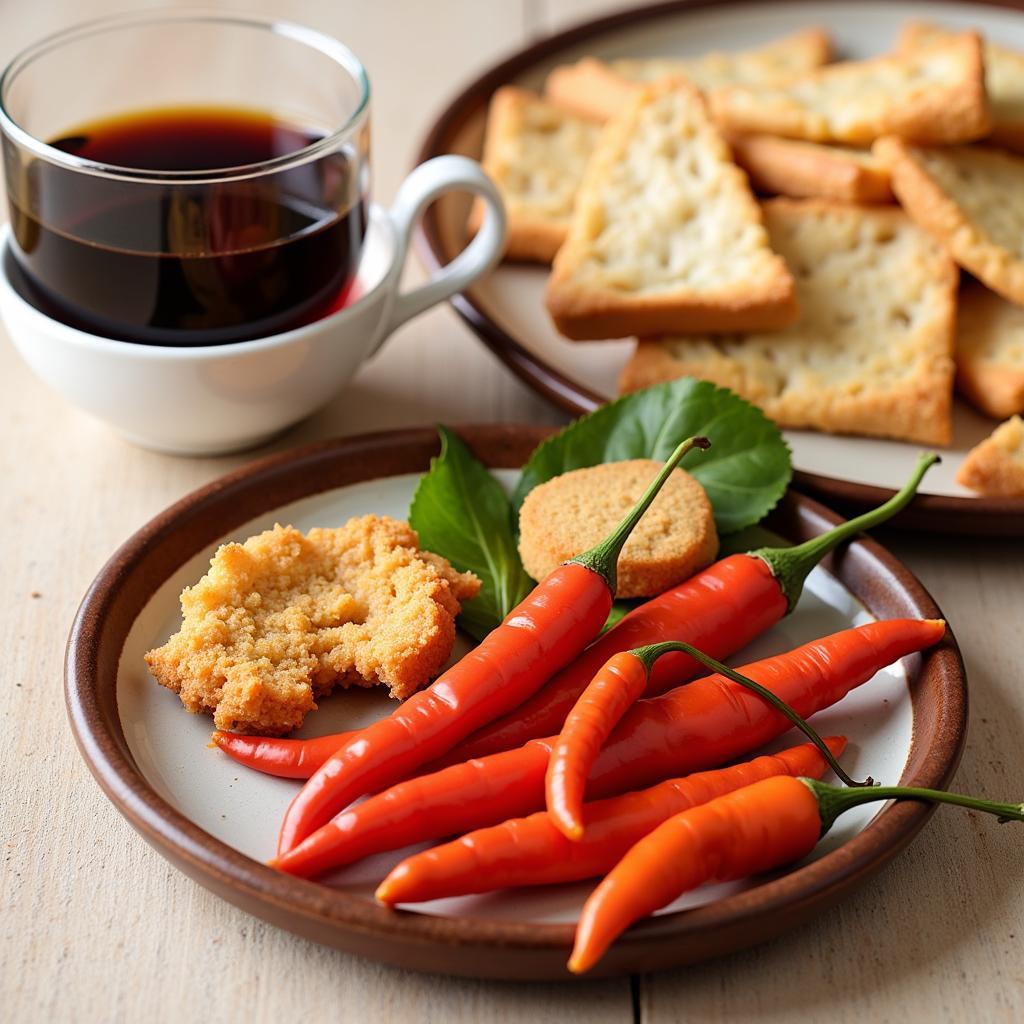Pitta Balancing Foods are key to maintaining inner harmony, especially during warmer months or when you’re feeling a little fiery. Understanding how these foods work can help you navigate your diet and lifestyle for optimal well-being. Let’s explore the world of pitta pacifying foods and how they can contribute to a more balanced you.
Understanding Pitta Dosha
In Ayurveda, pitta is one of the three doshas, or energies, that govern our physical and mental characteristics. Pitta is associated with fire and water, representing transformation and metabolism. When pitta is balanced, we experience sharp intellect, strong digestion, and a healthy drive. However, an imbalance can lead to irritability, inflammation, skin issues, and digestive problems. Knowing how to balance pitta through diet is crucial for overall health.
Cooling Foods for a Balanced Pitta
Choosing the right foods can significantly impact pitta balance. Generally, pitta types thrive on cooling, grounding foods that help to temper their fiery nature. Sweet, bitter, and astringent tastes are particularly beneficial. Think of incorporating foods like cucumbers, melons, leafy greens, and coconut into your diet.
Sweet fruits like mangoes and ripe bananas are also excellent choices. These fruits offer natural sugars that satisfy without aggravating pitta. However, it’s important to remember moderation, as excessive sweetness can still be problematic.
Here are some other examples of pitta balancing foods:
- Vegetables: Asparagus, broccoli, zucchini, sweet potatoes
- Fruits: Apples, pears, pomegranates, grapes
- Grains: Rice, oats, barley
- Legumes: Mung beans, chickpeas (in moderation)
- Spices: Coriander, fennel, cardamom, turmeric
These foods are generally cooling and help to soothe the digestive system. Remember to favor cooked foods over raw, as raw foods can be too stimulating for pitta.
 Pitta Balancing Meal
Pitta Balancing Meal
Incorporating Pitta Balancing Foods into Your Daily Life
Making small changes to your diet can have a big impact on your pitta balance. Start by incorporating one or two pitta-pacifying foods into each meal. For example, you could add cucumber to your lunchtime salad or enjoy a bowl of cooked oatmeal for breakfast.
Avoid spicy foods, excessive salt, and sour tastes, as these can aggravate pitta. Also, be mindful of your meal times. Pitta is strongest during the midday hours, so try to have your largest meal at lunchtime when your digestive fire is at its peak.
What Are the Signs of a Pitta Imbalance?
Recognizing the signs of a pitta imbalance is essential for addressing the issue promptly. Some common symptoms include:
- Skin rashes or acne
- Heartburn or acid indigestion
- Irritability and anger
- Excessive sweating
- Sensitivity to heat
If you notice these symptoms, it might be time to incorporate more pitta-balancing foods into your diet.
What to Avoid When Balancing Pitta
Just as important as knowing which foods to eat is understanding which ones to avoid. Foods that are heating, spicy, or oily can aggravate pitta. Here are some examples:
- Chili peppers
- Fried foods
- Processed foods
- Excessive caffeine
- Alcohol
Limiting these foods can help to prevent pitta from becoming aggravated.
 Pitta Aggravating Foods
Pitta Aggravating Foods
A Sample Pitta-Pacifying Meal Plan
To give you a better idea of how to incorporate pitta-balancing foods into your diet, here is a sample meal plan:
- Breakfast: Oatmeal with sliced bananas and a sprinkle of cardamom
- Lunch: Salad with mixed greens, cucumber, avocado, and a light vinaigrette
- Dinner: Steamed vegetables with basmati rice and a side of cooling yogurt
This is just a sample plan, and you can adjust it based on your individual needs and preferences.
Expert Insights on Pitta Balancing
Dr. Anjali Sharma, a renowned Ayurvedic practitioner, emphasizes the importance of a holistic approach to pitta balance. “Pitta is not just about food,” she says. “It’s also about lifestyle. Managing stress, getting enough sleep, and practicing mindfulness can all contribute to a balanced pitta.”
Another expert, Dr. Vivek Patel, adds, “Listen to your body. It will tell you what it needs. If you’re feeling hot and irritable, reach for cooling foods like cucumber and coconut water.”
 Pitta Balancing Lifestyle
Pitta Balancing Lifestyle
Conclusion: Embrace the Cooling Power of Pitta Balancing Foods
Pitta balancing foods offer a powerful way to maintain your well-being. By incorporating these cooling and nourishing foods into your diet, and adopting a mindful approach to your lifestyle, you can help to keep your pitta in check and experience the benefits of a balanced and harmonious inner state. Remember that consistency is key when making dietary changes for pitta balancing.
FAQ
- What are the main characteristics of pitta dosha?
- What are some common signs of a pitta imbalance?
- Can I eat spicy food if I have a pitta imbalance?
- What are the best fruits for balancing pitta?
- How often should I eat pitta-balancing foods?
- Can lifestyle choices affect my pitta balance?
- Are there any herbs that can help balance pitta?
Need help with balancing your doshas? Contact us! Phone: 02437655121, Email: minacones@gmail.com or visit us at 3PGH+8R9, ĐT70A, thôn Trung, Bắc Từ Liêm, Hà Nội, Việt Nam. We have a 24/7 customer support team ready to assist you. Explore our website for more articles on Ayurvedic nutrition, including our helpful guide on food for vata.